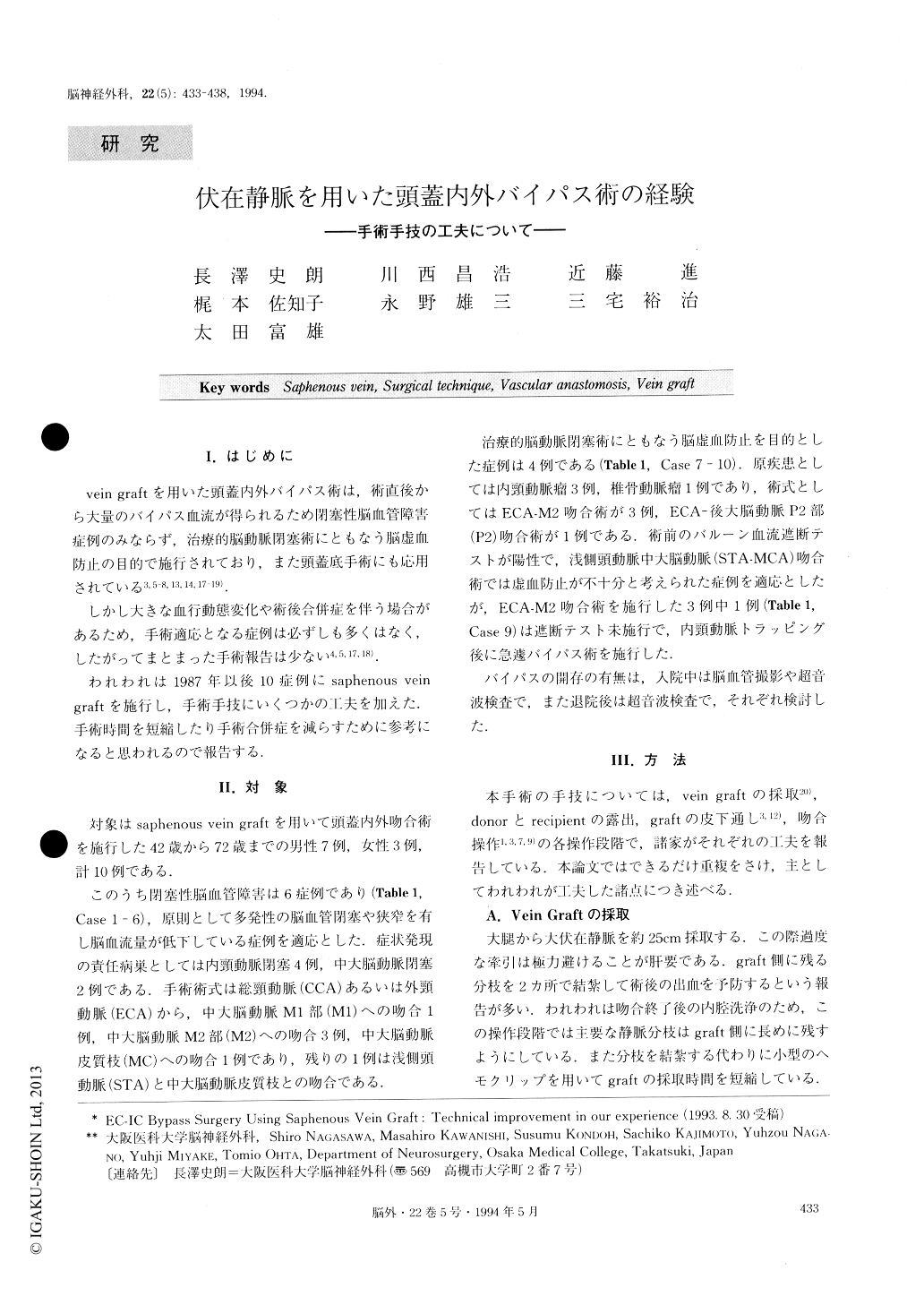Japanese
English
- 有料閲覧
- Abstract 文献概要
- 1ページ目 Look Inside
I.はじめに
vein graftを用いた頭蓋内外バイパス術は,術直後から大量のバイパス血流が得られるため閉塞性脳血管障害症例のみならず,治療的脳動脈閉塞術にともなう脳虚血防止の目的で施行されており,また頭蓋底手術にも応用されている3,5-8,13,14,17-19).
しかし大きな血行動態変化や術後合併症を伴う場合があるため,手術適応となる症例は必ずしも多くはなく,したがってまとまった手術報告は少ない4,5,17,18.
We managed ten cases of EC-IC bypass using a vein graft; six cases with multiple cerebral arterial occlu-sion and four cases with aneurysm necessitating ther-apeutic occlusion of the parent artery (Table). Patency of the graft was confirmed in seven cases on long-term follow-up ranging from 7 months to 5 years. Of the ten cases, two died within 7 days after surgery from causes unrelated to the bypass and one was lost in follow-up surgery. Hemorrhagic infarction was observed in two cases, one of which underwent removal of the hemato-ma. In five cases with cerebral occlusive disease, there were no additional ischemic events and two cases with giant aneurysms showed improvement of visual acuity and extraocular movement.
We improved on several surgical techniques for vein graft. We used small hemoclips to occlude branches of the saphenous vein instead of ligating them, which shortens the harvesting time of the saphenous vein. Vessel cannula with a small-sized elegant tip and one-directional valve (DLP, INC., USA) was also used to inflate or deflate vein grafts with saline. It was easily attached to the graft and minimized air entrapment in the lumen. Small clips for microvascular anastomosis (Mizuho INC., Japan) were used to temporarily occlude branches or perforators from the recipient artery. One of the branches of the graft was dissected long enough, through which intraluminal air or throm-bus was washed out at the final stage of the surgery. These procedures are useful for shortening occlusion time of the recipient artery and decreasing the risk of embolism.

Copyright © 1994, Igaku-Shoin Ltd. All rights reserved.


